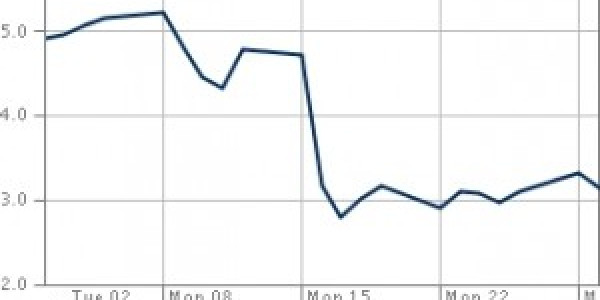By 3p Contributor | May 1st, 2013 By Emil Dimantchev On 16 April, the European Parliament rejected a proposal to reduce supply in the European emissions trading system (EU ETS). The European carbon price crashed to never-before-seen lows immediately afterwards, reflecting just how important the Parliament’s vote was. The outcome prompted The Economist to title its response article, “ ETS RIP? ” Thomson Reuters Point Carbon declared the EU ETS “irrelevant as an emissions reduction tool for many years to come.” Given the historic importance ascribed to the vote, it is important to consider how it came about and what implications it has for carbon markets in Europe and around the world. Since 2009, the EU ETS has accumulated a large surplus of allowances, as emissions have fallen faster than initially predicted by the system’s creators. There are two main reasons for the drop in emissions – Europe’s financial crisis and its policies for promoting renewable energy and energy efficiency. The market’s surplus has caused carbon prices to decline dramatically from their peak of €29 per ton in 2008 to €5 per ton just prior to the 16 April vote. Low carbon prices were, by themselves, not considered a problem for the EU ETS. They reflected the fact that EU’s short-term commitment to reduce emissions had become easier to meet. The EU no longer needed to switch from coal to gas or adopt Carbon Capture and Storage to reduce emissions by 20 percent below 1990 levels in 2020, and so it no longer needed a high carbon price. In the context of European climate policy however, low carbon prices worried policymakers. The EU does not have a legally binding emission reduction target for 2030, or 2040. Therefore, in the absence of a significant carbon price, the private sector lacks a clear policy signal to invest in low carbon technologies. The European Commission, the executive arm of the EU, recognized this as a problem for climate policy in the long term. The energy sector’s long investment cycles mean that high-carbon capacity built today would eventually make it harder to meet EU’s 2050 emission target – to reduce emissions by 90 percent below 1990. To restore the signal for low carbon investments, the Commission came up with a complicated two-step plan to increase carbon prices. The first step was a proposal to adjust the timing of supply in the market – withdrawing permits in the next few years and re-injecting them later (referred to as backloading). The second step would be a more fundamental amendment to the carbon market, which would allow the permanent cancellation of permits. Analysts agreed that these two measures would significantly increase prices. Participants in the market expected the plan to go through and make carbon prices significant for business decisions. A survey by Thomson Reuters Point Carbon in February revealed 65 percent of market participants believed there would be a backloading of permits and 64 percent believed permits would be cancelled. But on 16 April, the European Parliament rejected the Commission’s backloading proposal, effectively putting an end to the bureaucrats’ two-step plan. The failure of the proposal combined with the upcoming elections of a new Commission and Parliament in 2014 means there is likely no time to table new proposals by 2015 or implement any supply adjusting measures before 2020. The market is therefore likely to stay oversupplied for the rest of the decade. Thomson Reuters Point Carbon believes prices will not rise significantly above €3 per ton, where they are currently, before 2020. A long period of low carbon prices marks a paradigm shift for European climate policy. Before the Commission’s backloading proposal was shot down, businesses expected European carbon prices to remain significant in the long term. These expectations drove emission reductions – several studies showed that companies reduced 330 million tons of emissions because of the ETS between 2005 and 2010, despite an excess of supply and volatile prices. But expectations for low prices in the long term will most likely render the ETS insignificant for business decisions. In terms of its capacity to create incentives for low-carbon investments, the EU ETS is entering an ice age. The demise of Europe’s carbon prices affects not only European climate policy, but will most likely reverberate to carbon markets elsewhere. The European experience is unlikely to reverse progress made on emerging carbon markets in California, Australia, China, South Korea and other countries. On the contrary, it will probably make them more resilient. The history of the EU ETS teaches that the absence of price floors in an emissions trading system fails to deliver the clear, predictable and long-term incentive, which the energy sector requires for investments in carbon-free technologies. A carbon price floor will, theoretically, amend what many consider the systemic drawback of the EU ETS. A price floor can be implemented through a price containment reserve which takes permits out of the system when prices become too low. California’s ETS adopts a similar approach. In the future, it might provide a proof of concept for incorporating the same principle in other carbon markets. Considering the recent developments in Europe, price management mechanisms could well become a model to follow for carbon markets around the world. Emil Dimantchev is a carbon market analyst at Thomson Reuters Point Carbon. The views expressed in this article are entirely his own, unless stated otherwise. Image credit: Thomson Reuters Point Carbon Taylor Scott International
A Paradigm Shift in EU Climate Policy

This entry was posted in Investment, investments, News, Property, Taylor Scott International, TSI, Uk and tagged alternative, australia, calendar, carbon, chat, countries, europe, european, investment, news, paradigm, property. Bookmark the permalink.







